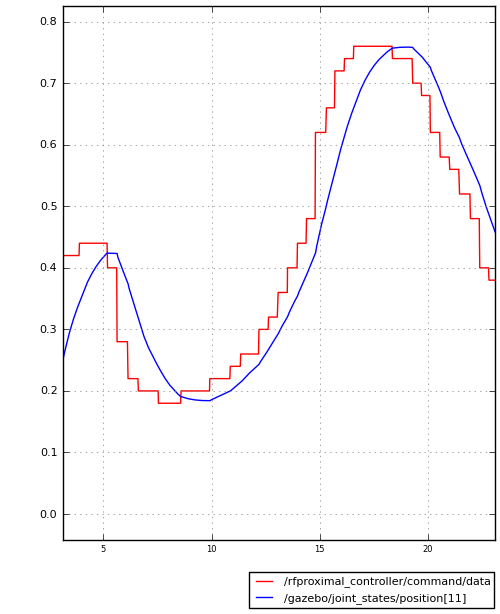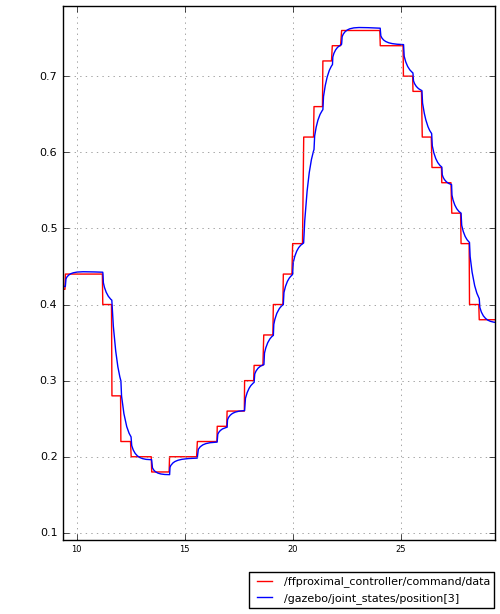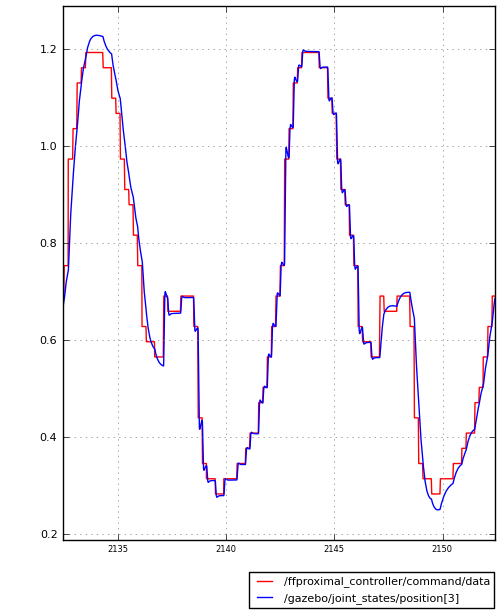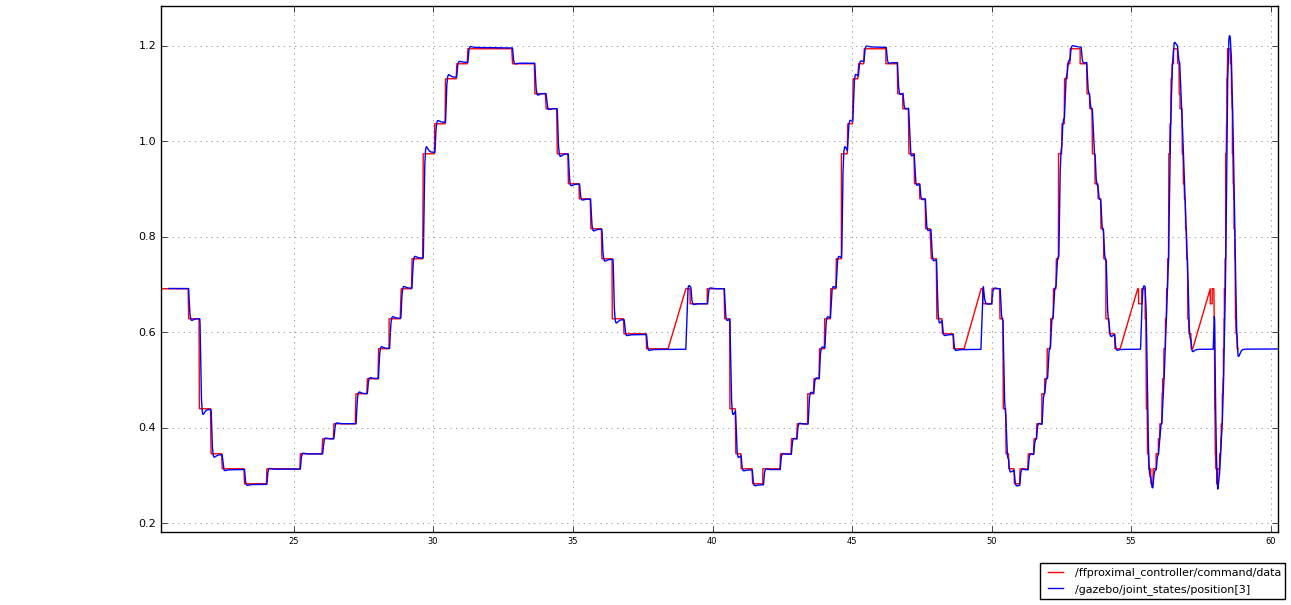Contents
Overview
This package is still under development. The goal is to have an automatic way of tuning the PID parameters on our controllers. We're using eodev to implement our evolutionary algorithm.
Here is an overview of the early results obtained with the automatic pid tuning. The algorithm was run on the simulated version of the hand in Gazebo. The middle "wave" of the third plot shows an excellent tuning in term of error minimization, but it's slightly unstable so we won't use it.



Finally we obtained a very well tuned joint using this optimization algorithm, after a 35min cycle. Here is the plot for the same movement at different speed (please note that no targets is being published for a short time when changing the movement speed, which explains the difference between the (interpolated) target line and the position line):

Running the tuning
You should edit the starting seed of the algorithm (it is recommended to use some working values) in the seed.yaml file. The max_variations parameter in this file defines the range which will be explored by the algorithm.
You can run the algorithm with the following command line:
$ rosparam load `rospack find sr_automatic_pid_tuning`/seed.yaml ; rosrun sr_automatic_pid_tuning sr_automatic_pid_tuning /sr_automatic_pid_tuning/targets:=/sh_ffj3_effort_controller/command --popSize=10 --weakElitism=2 --pCross=0.9 --maxGen=10 --joint="ffj3" _image_path:="`rospack find sr_movements`/movements/test.png" _min:=-200.0 _max:=200. _publish_rate:=500 _controler:="motor"
Other useful parameters:
--targetFitness=0 set a target for the fitness: if the target is reached, then stop.
--plotSRAutomaticPidTuningStat --plotHisto: generate a .xg file which you can plot with gnuplot.
More options
To see all the options, you can run:
$ rosrun sr_automatic_pid_tuning sr_automatic_pid_tuning --help
